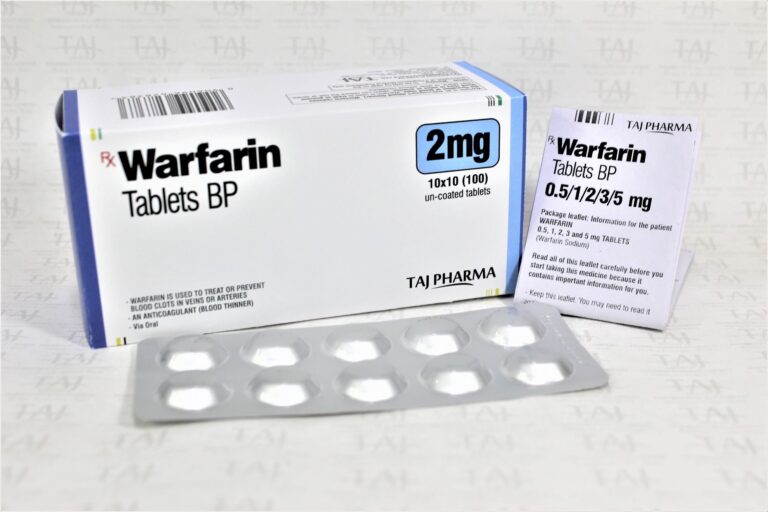What are the uses of Warfarin?
Warfarin is an anticoagulant (blood thinner) used primarily to prevent and treat various conditions related to abnormal blood clotting. Its main uses include:
- Preventing Stroke: In patients with atrial fibrillation (an irregular heart rhythm) or other conditions that increase the risk of stroke.
- Treating Deep Vein Thrombosis (DVT): A condition where blood clots form in deep veins, usually in the legs.
- Treating Pulmonary Embolism: A blockage in one of the pulmonary arteries in the lungs, usually caused by blood clots that travel from the legs.
- Preventing Blood Clots After Surgery: Particularly after joint replacement surgeries or other procedures with a high risk of clot formation.
- Preventing Blood Clots in Patients with Mechanical Heart Valves: To reduce the risk of clots forming on or around artificial heart valves.
- Managing Certain Types of Heart Valve Disease: Such as in patients with prosthetic heart valves or those with a history of clotting disorders.
Warfarin works by inhibiting vitamin K-dependent clotting factors, which are essential for blood clot formation. Its use requires regular monitoring through blood tests to ensure that the blood’s clotting ability is maintained within a safe range.
What are the side effects of Warfarin?
Warfarin can cause a range of side effects, some of which may be serious. Common side effects include:
- Bleeding: The most significant risk, which can occur anywhere in the body. This may include nosebleeds, gum bleeding, or blood in urine or stools.
- Bruising: Increased tendency to bruise easily.
- Gastrointestinal Issues: Such as nausea and vomiting, or abdominal pain.
- Rashes: Skin rashes or itching.
- Hair Loss: Thinning or loss of hair in some individuals.
Serious side effects include:
- Severe Bleeding: This can be life-threatening and might require immediate medical attention. Symptoms include severe headache, dizziness, severe abdominal pain, or sudden changes in vision.
- Purple Toe Syndrome: A rare condition that can cause painful, purple-colored toes due to blood clots.
- Warfarin-Induced Skin Necrosis: A rare but serious condition where areas of the skin can become necrotic (dead) due to blood clots in the small blood vessels of the skin.
- Osteoporosis: Long-term use may increase the risk of bone fractures.
Patients taking Warfarin need regular monitoring of their blood’s clotting ability (usually through INR testing) to manage the risk of bleeding and ensure the medication is working effectively. It’s essential to inform healthcare providers about any unusual symptoms or side effects experienced while on Warfarin.
What are alternative home remedies to Warfarin? What are some natural blood thinners?
Several natural substances and dietary components can act as blood thinners. These include:
- Garlic: Contains compounds that can inhibit platelet aggregation and improve blood flow.
- Ginger: Has anti-inflammatory and anticoagulant properties.
- Turmeric: Contains curcumin, which can help reduce clot formation.
- Cayenne Pepper: Contains capsaicin, which may have blood-thinning effects.
- Ginkgo Biloba: Believed to improve blood flow and reduce blood clotting.
- Cinnamon: Contains coumarin, which can have anticoagulant effects.
- Green Tea: Contains compounds that may help prevent blood clots.
- Omega-3 Fatty Acids: Found in fish oil and flaxseeds, these can help reduce platelet aggregation.
It’s important to consult with a healthcare provider before using these substances, especially if you are taking prescribed blood thinners or have underlying health conditions. Natural blood thinners can interact with medications and may have side effects, so professional guidance ensures safety and efficacy.

Leave a Reply
You must be logged in to post a comment.